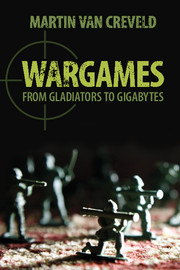Book contents
- Frontmatter
- Contents
- Acknowledgments
- Introduction
- 1 On animals and men
- 2 Games and gladiators
- 3 Trials by combat, tournaments, and duels
- 4 Battles, campaigns, wars, and politics
- 5 From bloody games to bloodless wars
- 6 Enter the computer
- 7 The females of the species
- 8 Conclusions: The mirrors and the mirrored
- Index
- References
3 - Trials by combat, tournaments, and duels
Published online by Cambridge University Press: 05 April 2013
- Frontmatter
- Contents
- Acknowledgments
- Introduction
- 1 On animals and men
- 2 Games and gladiators
- 3 Trials by combat, tournaments, and duels
- 4 Battles, campaigns, wars, and politics
- 5 From bloody games to bloodless wars
- 6 Enter the computer
- 7 The females of the species
- 8 Conclusions: The mirrors and the mirrored
- Index
- References
Summary
A certain kind of justice
As a look at the literature will show, the line between trial by combat on one hand and single combat and combat of champions on the other has always been rather vague. As long ago as the Middle Ages, various authors referred to the same episodes by different terms or used the same terms when referring to very different episodes. In all three cases the fight, rather than being an integral part of ongoing hostilities, is clearly separated from them by means of challenge and response as well as the fact that it took place in a location specially set apart for the purpose. Often it is supposed to act as a substitute for those hostilities or to put an end to them, albeit that in most cases things did not work out as planned, the terms of the preliminary agreement were violated, and hostilities opened or resumed. In all three cases the fight is carefully stage-managed, the objective being to enable as many people as possible to watch it. In all three cases, the fighting serves as an ordeal and is intended to prove a point – either that God is on one’s side, or that one’s cause is just, or simply that one trusts in one’s prowess and stands ready to take on any enemy who dares to present himself. What sets trial by combat apart from the other two is a unique characteristic which justifies treating it separately: namely the fact that, in this case, the fight is neither an exhibition nor a contest but part of a formal judiciary process. As such it takes place at the behest of a judge, or judges, who commands both sides and presides over the proceedings.
- Type
- Chapter
- Information
- WargamesFrom Gladiators to Gigabytes, pp. 97 - 138Publisher: Cambridge University PressPrint publication year: 2013



